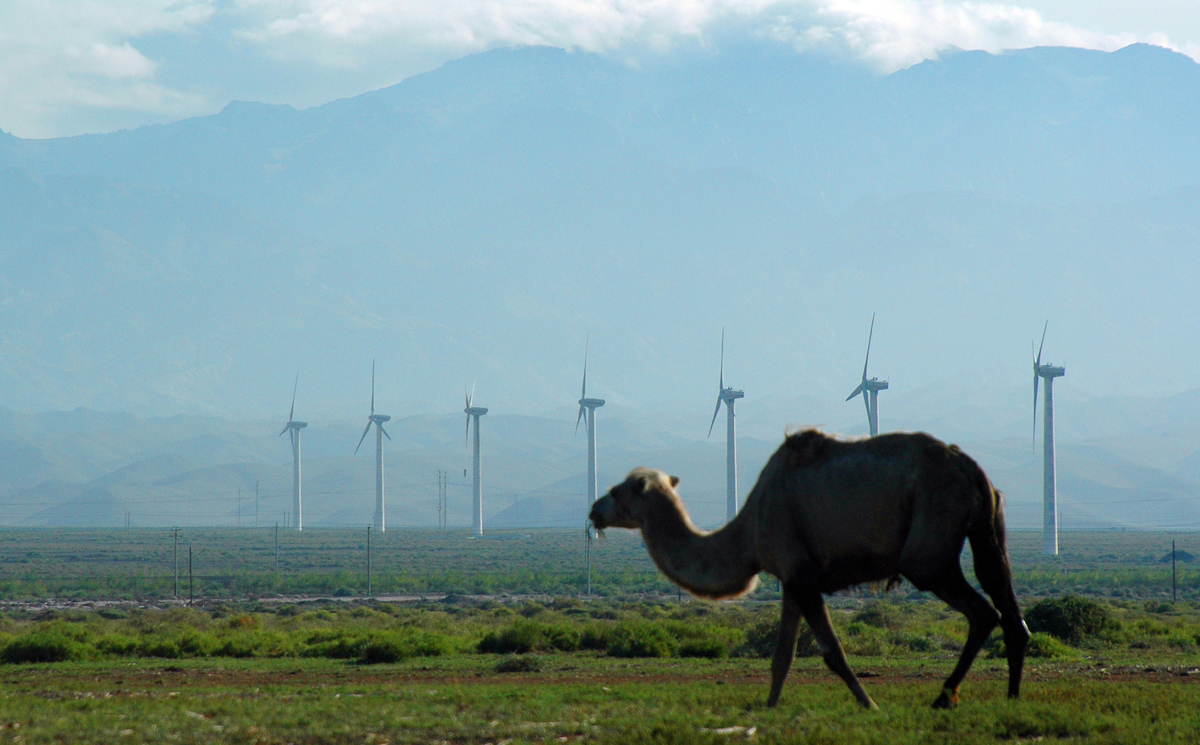A camel passes in front of Dabancheng Wind Farm. China’s best wind resources are made possible by the natural breach in Tianshan (Tian mountain). China has huge wind resources, which could be easily and profitably exploited by switching investment from climate destroying fossil fuels into harvesting this clean, abundant energy resource.
The data is in, and at first glance it looks like good news. China’s air quality has improved overall, but much of its less developed middle and western cities have seen marked increases in PM2.5 levels.

Not to mention Mark Zuckerburg’s now infamous ‘Beijing Smog Jog’
Forgetting something? #Markzuckerberg Smog kills thousands every day. Wear a mask! https://t.co/P6Xy8FUbBb pic.twitter.com/P9pRjXHRt7
— Greenpeace East Asia (@GreenpeaceEAsia) March 18, 2016
We mined the data for 362 cities across the country and discovered that China’s overall air quality has made massive improvements in the first quarter of 2016.
China’s PM2.5 concentration fell an average of 8.8% compared to this time last year
Air quality in China’s eastern coastal cities improved dramatically in the first quarter of 2016. Beijing’s PM2.5 concentration dropped by an incredible 27% compared to 2015’s first quarter, while Shanghai’s dropped by 12%.
This is great news for Beijing’s residents who suffered from some of the worst pollution on record at the end of last year:
But pollution got worse in many cities in central and western China.
Looking at the data on a regional basis, we see an entirely different story.
91of the 362 cities suffered from increases in air pollution, 69 of which are located in central and western China. What’s more they saw a huge average jump of 20% compared to 2015 levels.
Xinjiang fared particularly poorly- this quarters top 5 most polluted cities were all located there.
The improved air quality in the east is a clear result of China taking measures to tackle abysmal air pollution in the region. China’s Air Pollution Action plan set solid targets for PM2.5 reduction in the Beijing-Tianjin-Hebei region, leading local governments to proactively monitor and manage air pollution.
But as eastern China comes under increasingly stringent controls, polluting industries have been heading west, to areas that aren’t subject to as strict regulations.
Between 2012-2015, industrial expansion expanded rapidly in western and central regions and it looks set to increase.
China saw permit applications for 210 new coal fired power plants in 2015, 75% of which are to be located in central and western regions.
Unless action is taken, the trend of deteriorating air quality in parts of central and western China will continue.
The tremendous improvement seen in Beijing and the surrounding areas, demonstrates that enforcing a coal cap can dramatically reduce life-threatening air pollution on a regional basis: now it needs to be enforced nationwide.
Rolling out these measures across China means that polluting industries won’t be able to move their production- and the accompanying air pollution- westwards.
China has shown that it can make tremendous progress when it comes to tackling air pollution but it can’t implement that change selectively. Steps need to be taken to make sure these measures benefit all of China’s citizens.
See the full city rankings here.
Dong Liansai is a climate and energy campaigner for Greenpeace East Asia
